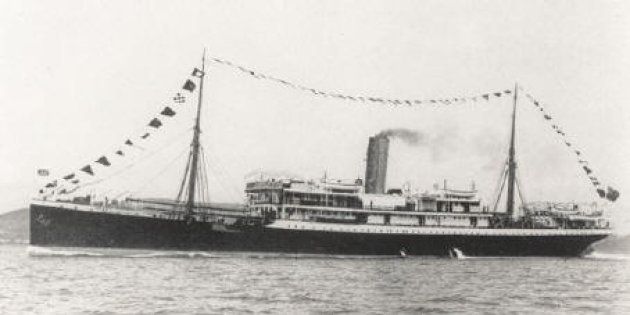
The new year starts with the declaration of the Mendi and Sharpeville national heritage sites.
This is in time for the centenary later this year of the deaths of the Mendi group in World War I and, for the Sharpeville memorial, finally marks an official acknowledgment of an iconic event always linked to the minority Pan Africanist Congress (PAC) group rather than the ruling African National Congress (ANC).
In a government notice issued on December 30, the South African Heritage Resources Agency declared the Mendi Memorial on the University of Cape Town (UCT) sports fields in Rosebank, Cape Town, as a national heritage site.
"The Mendi Memorial, located at the southeast corner of the University of Cape Town's soccer fields, is a symbolic reminder of the South African lives lost on the steamship Mendi in 1917 and of the long-ignored and forgotten history of the South African Native Labour Corps," said the notice issued by the Department of Arts and Culture.
This was where they spent their last night on South African soil
"It is a reminder of the role played by black South Africans in World War I and of the links these events have to the liberation struggle in South Africa. The University of Cape Town soccer fields were formerly the Rosebank Showgrounds which were used during World War I as the national assembly camp and depot for the South African Native Labour Corps. It was at this camp that all the men enlisted in the corps from all over South Africa and Botswana, Swaziland and Lesotho assembled, were kitted out and received their basic training, and from which they departed to Cape Town harbour to take ship to France. For many of the men on the Mendi, this was where they spent their last night on South African soil."
The SS Mendi sank near France on February 21, 1917.
According to the SA Navy's website, the SS Mendi troopship sailed from Cape Town on January 6, 1917, for France, "carrying 805 black private, 5 white officers and 17 non-commissioned officers as well as 33 crewmembers". On Febuary 21 the Mendi was rammed by the SS Darro; the Mendi sank and 649 died.
The loss of the Mendi is commemorated every year on the third Sunday of February.
There are three sites linked to the Sharpeville massacre which are now declared national heritage sites. The massacre was on March 21, 1960, when 69 died in a protest when they were shot by police. This incident was used as the start of the apartheid-era period which the Truth and Reconciliation Commission assessed.
The sites are the memorial garden, the police station and the graves of the 69 in the Phelindaba Cemetery, all in Vereeniging.
"The 21st March 1960 marked a critical turning point in the history of South Africa when police opened fire on a peaceful march led by the Pan Africanist Congress in protest against the pass laws," said the Department of Arts and Culture notice.
This brutal response from the state was the catalyst for the move away from passive resistance to armed struggle
"Marches were organised in both Sharpeville (Gauteng) and Langa (Cape Town). This display of police brutality in which 69 people died, was to become known as the Sharpeville Massacre. Demonstrations and riots broke out across the country in reaction to the police response to both protests in Sharpeville and Langa.
"This led to the first declaration of a State of Emergency under apartheid, and saw the banning of the ANC and Pan Africanist Congress (PAC). This brutal response from the state was the catalyst for the move away from passive resistance to armed struggle.
"The massacre inspired the painting of the 'Black Priest' by Ronald Harrison (itself an important struggle artwork that raised funds for Defence and Aid Movement). As testimony to the brutal force used to enforce the racial policies of the Apartheid administration, the Sharpeville Police Station, the memorial garden and the graves of the victims commemorate and honour those who bravely marched in protest against the forced relocation and restricted movements imposed by the Pass Laws and lost their lives on 21st March 1960."